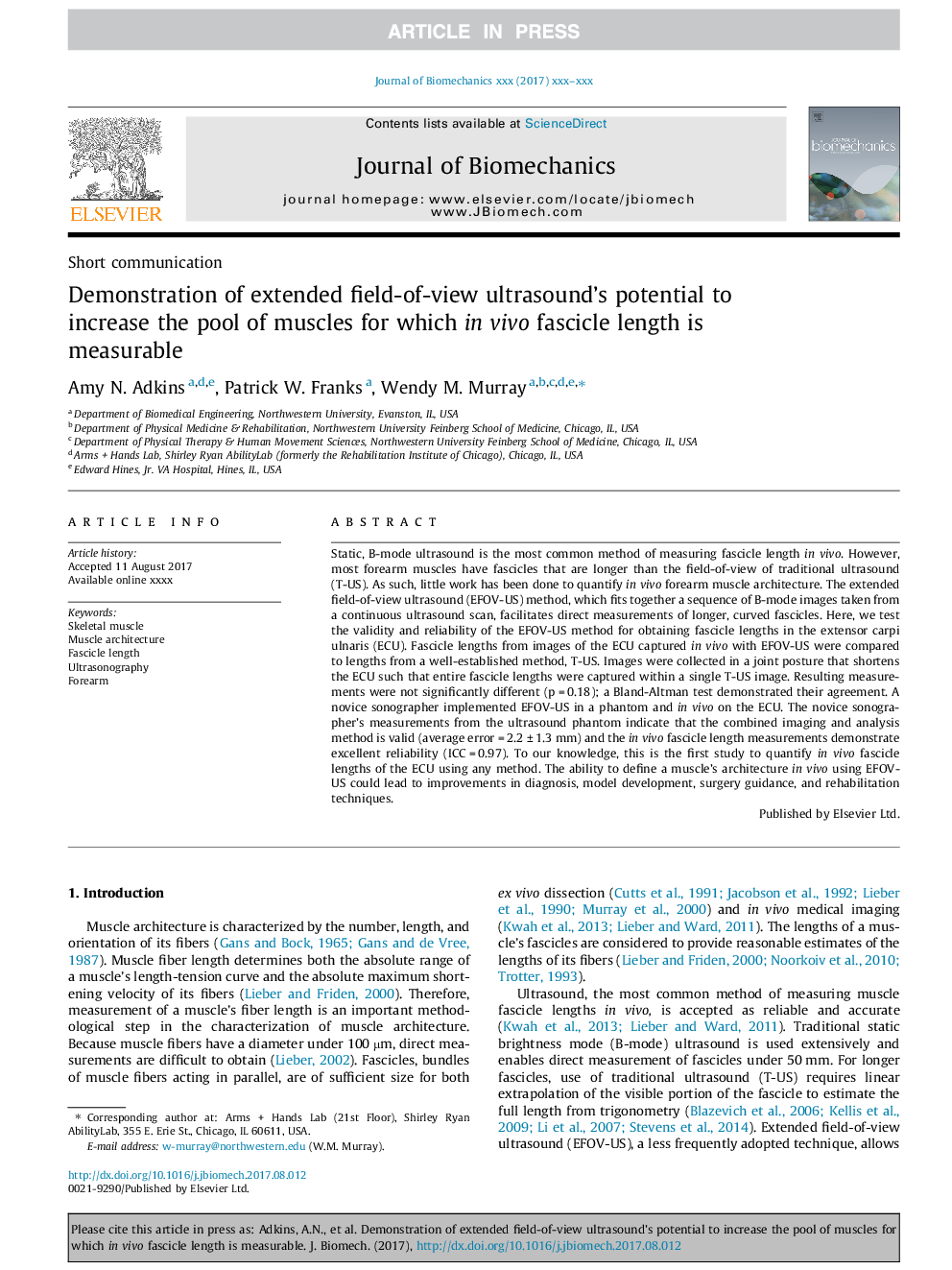| Article ID | Journal | Published Year | Pages | File Type |
|---|---|---|---|---|
| 7237168 | Journal of Biomechanics | 2017 | 7 Pages |
Abstract
Static, B-mode ultrasound is the most common method of measuring fascicle length in vivo. However, most forearm muscles have fascicles that are longer than the field-of-view of traditional ultrasound (T-US). As such, little work has been done to quantify in vivo forearm muscle architecture. The extended field-of-view ultrasound (EFOV-US) method, which fits together a sequence of B-mode images taken from a continuous ultrasound scan, facilitates direct measurements of longer, curved fascicles. Here, we test the validity and reliability of the EFOV-US method for obtaining fascicle lengths in the extensor carpi ulnaris (ECU). Fascicle lengths from images of the ECU captured in vivo with EFOV-US were compared to lengths from a well-established method, T-US. Images were collected in a joint posture that shortens the ECU such that entire fascicle lengths were captured within a single T-US image. Resulting measurements were not significantly different (p = 0.18); a Bland-Altman test demonstrated their agreement. A novice sonographer implemented EFOV-US in a phantom and in vivo on the ECU. The novice sonographer's measurements from the ultrasound phantom indicate that the combined imaging and analysis method is valid (average error = 2.2 ± 1.3 mm) and the in vivo fascicle length measurements demonstrate excellent reliability (ICC = 0.97). To our knowledge, this is the first study to quantify in vivo fascicle lengths of the ECU using any method. The ability to define a muscle's architecture in vivo using EFOV-US could lead to improvements in diagnosis, model development, surgery guidance, and rehabilitation techniques.
Related Topics
Physical Sciences and Engineering
Engineering
Biomedical Engineering
Authors
Amy N. Adkins, Patrick W. Franks, Wendy M. Murray,
